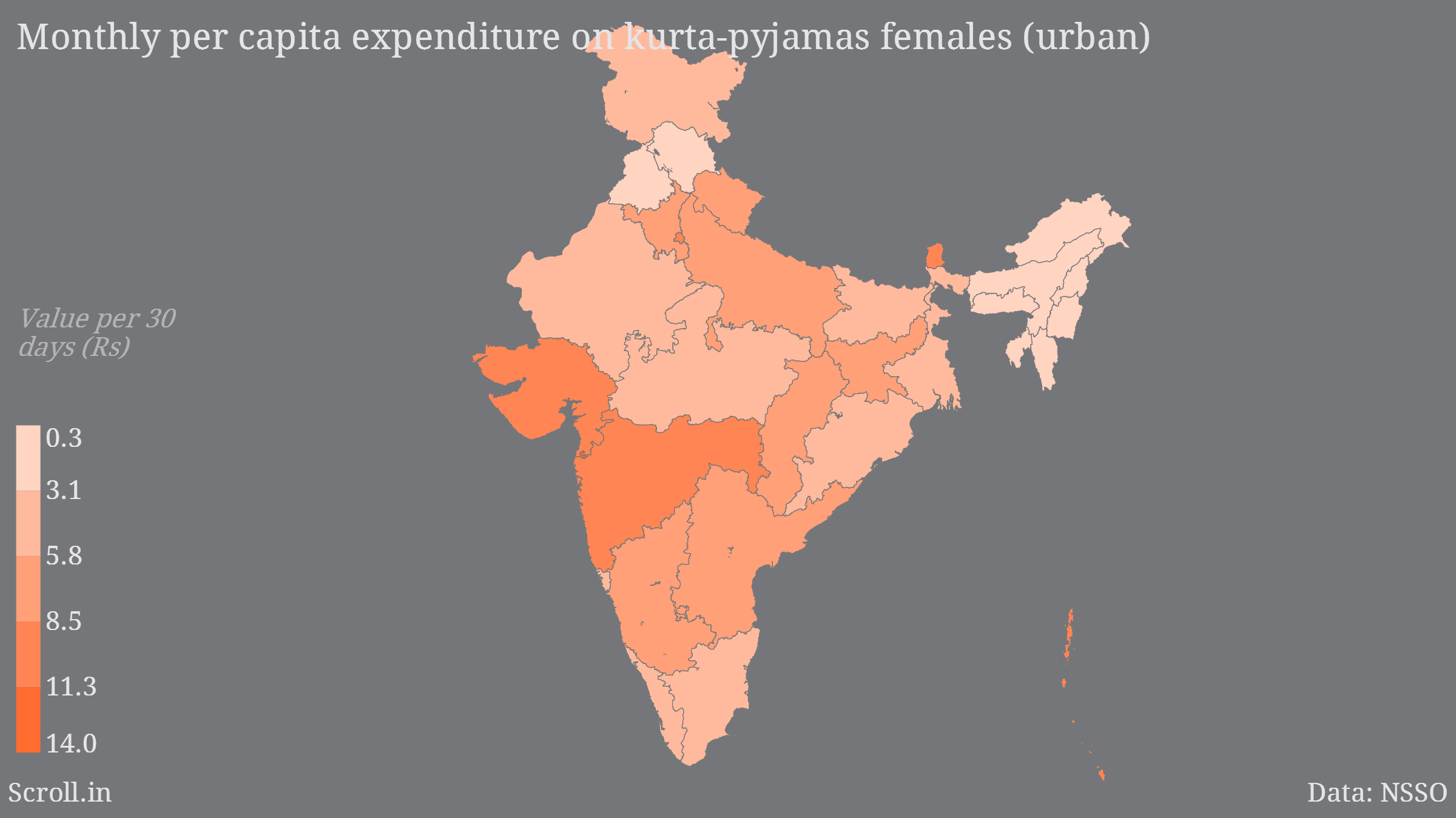The expenditure on kurta-pyjamas (also known as Punjabi suits) among Malayali women is on the rise, despite the prevalence of saris, according to the National Sample Survey Organisation's consumption data for 2011-'12.
The data throw up many changes in consumer clothing choices.
The following charts compare spending of women's clothing, namely saris and kurta-pyjamas (Punjabi suits), in both rural and urban India. There may exist an underlying generational story to such sartorial changes.




The sari still remains the garment of choice across rural India, with Andhra Pradesh, Kerala and West Bengal being the high spending states. This is not surprising, as they are also home to a large number of indigenous sari weaving traditions. In urban India, though, the amount spent on saris is on the decline, except in the states mentioned above.
Interestingly, Daman and Diu and Andaman and Nicobar, both union territories, are the highest per capita spenders of saris in both rural and urban areas.
The sari is the dress of choice for rural India due to the demands of tradition and price.
In Gujarat, Maharashtra, Karnataka and Andhra Pradesh, kurta-pyjamas hold an edge over saris in urban areas. Even though Punjabi suits are more expensive, they are considered easier to wear and the youth prefer it.


The growing number of Keralites wearing Punjabi suits has been noted for some time. It is the dress of choice for outdoor occasions and younger women seem to favour it. In South India, kurta-pyjamas represent a move away from tradition, though not as complete a break in tradition as signified by the decision to wear jeans and other Western-style clothes. The kurta-pyjama is presented as a compromise, presumably adopted for its convenience.
The data throw up many changes in consumer clothing choices.
The following charts compare spending of women's clothing, namely saris and kurta-pyjamas (Punjabi suits), in both rural and urban India. There may exist an underlying generational story to such sartorial changes.




The sari still remains the garment of choice across rural India, with Andhra Pradesh, Kerala and West Bengal being the high spending states. This is not surprising, as they are also home to a large number of indigenous sari weaving traditions. In urban India, though, the amount spent on saris is on the decline, except in the states mentioned above.
Interestingly, Daman and Diu and Andaman and Nicobar, both union territories, are the highest per capita spenders of saris in both rural and urban areas.
The sari is the dress of choice for rural India due to the demands of tradition and price.
In Gujarat, Maharashtra, Karnataka and Andhra Pradesh, kurta-pyjamas hold an edge over saris in urban areas. Even though Punjabi suits are more expensive, they are considered easier to wear and the youth prefer it.


The growing number of Keralites wearing Punjabi suits has been noted for some time. It is the dress of choice for outdoor occasions and younger women seem to favour it. In South India, kurta-pyjamas represent a move away from tradition, though not as complete a break in tradition as signified by the decision to wear jeans and other Western-style clothes. The kurta-pyjama is presented as a compromise, presumably adopted for its convenience.
Buy an annual Scroll Membership to support independent journalism and get special benefits.
Our journalism is for everyone. But you can get special privileges by buying an annual Scroll Membership. Sign up today!